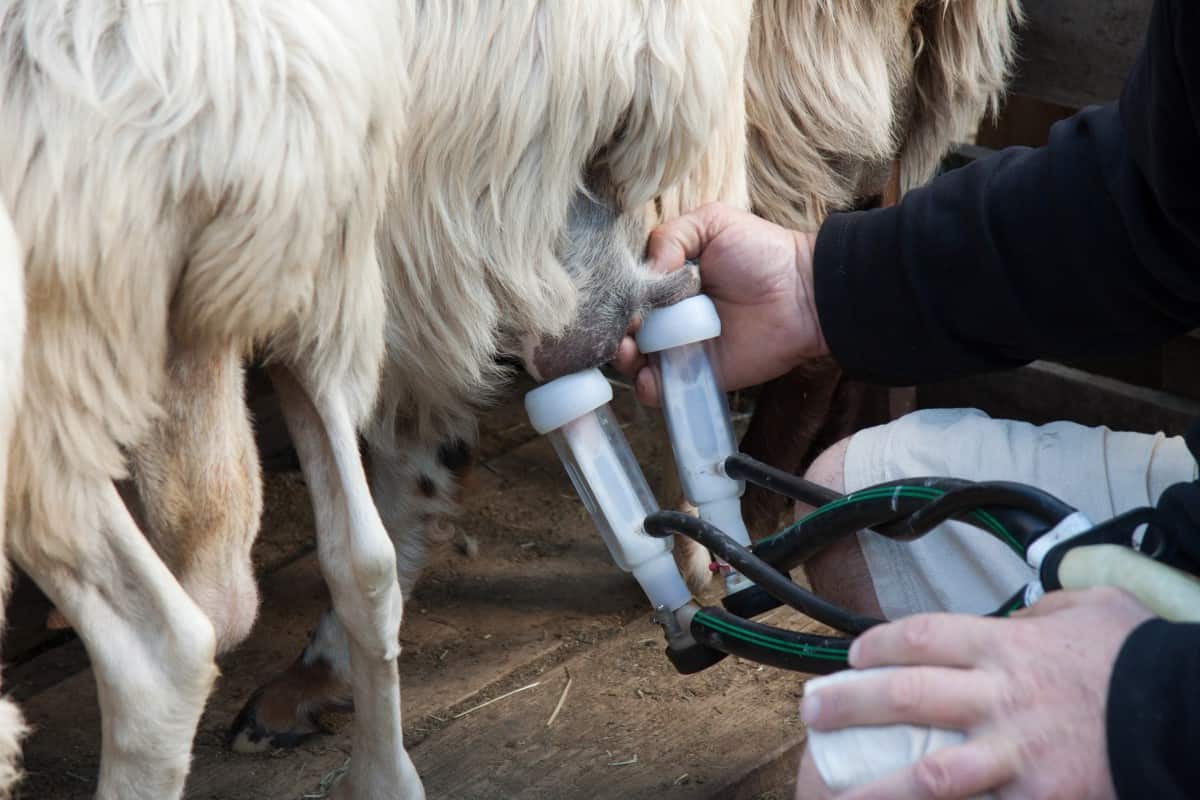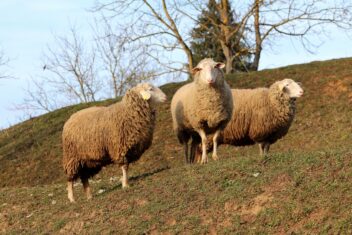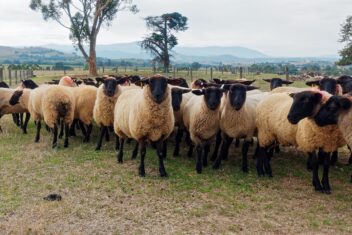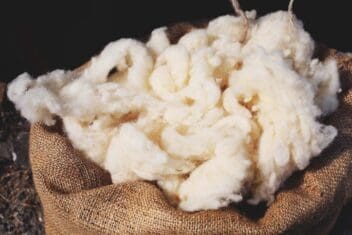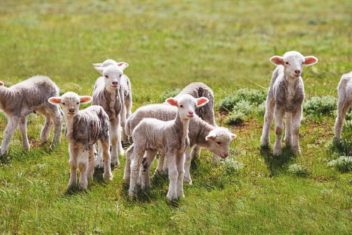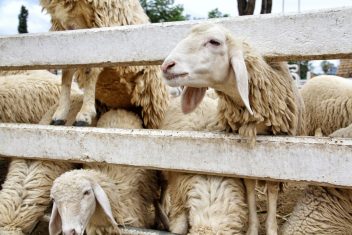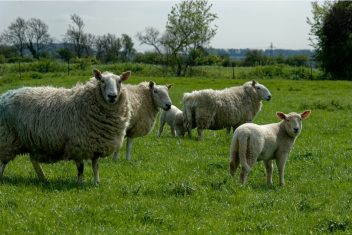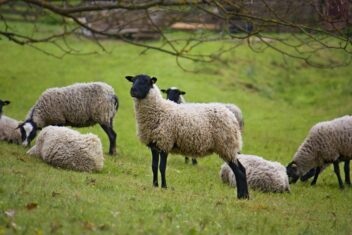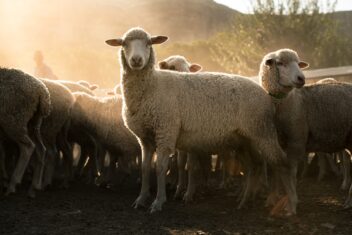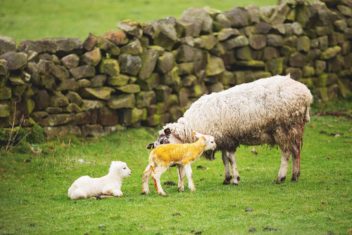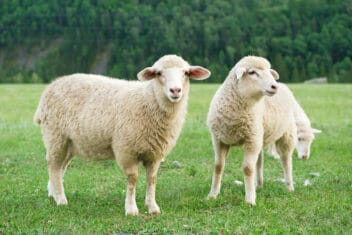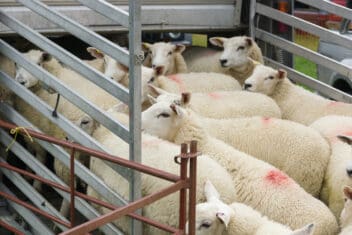Picture this – fresh chocolate chip cookies, right out of the oven, with a tall glass of milk.
What kind of milk, you might ask?
For most people, cow’s milk reigns supreme when it comes to the beverage of choice. However, there are plenty of other kinds of milk you can choose from, especially when you have a small farm or homestead. In fact, dairy sheep are making a resurgence in the US.
First raised in most parts of the country only in the late 1980s, the dairy sheep industry is small but growing rapidly. While you likely won’t find sheep’s milk on the shelves at your corner grocery store, there are plenty of reasons to consider producing it and raising dairy sheep for yourself.
Here’s how to raise dairy sheep so you can get started today.
Why Raise Sheep For Dairy?
There are plenty of good reasons to consider raising dairy sheep.
For one, the tasty milk. I am not a huge fan of drinking fresh sheep’s milk myself, but I do love sheep cheese (feta, anyone?) and creamy yogurt. Sheep’s milk is said to be easier to digest than cow’s milk and is also richer in calcium, vitamins A, E, and B, and magnesium than cow’s milk.
Artisan cheese-makers even say that sheep’s milk is far easier to work with since its fat globules are much smaller.
Dairy sheep are smaller than other meat or wool breeds. Because of this, they’re often easier to handle. Some dairy breeds, though, can also be raised for meat and wool, meaning you’ll be able to multitask on your farm.
Best Breeds for Raising Dairy Sheep
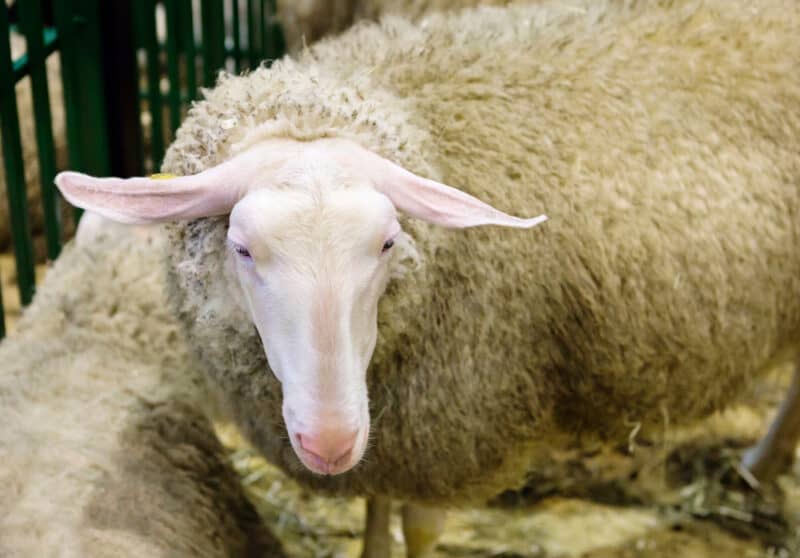
Just as there are cattle and goat breeds that are best known for their milk production, so too are different breeds of sheep more desirable than others.
Some of the best breeds for milk production include the East Friesian, Lacaune, Chios, Sarda, British Milk sheep, and Awassi. However, if you’re beginning to raise dairy sheep in the US, you’ll likely find that only the East Friesian and Lacaune are easy to come by.
You can really raise any kind of sheep for dairy (Dorsets and Icelandic’s are often used for this purpose) but the production will be much lower than the Lacaune and East Friesian.
Breeding Sheep for Milk Production
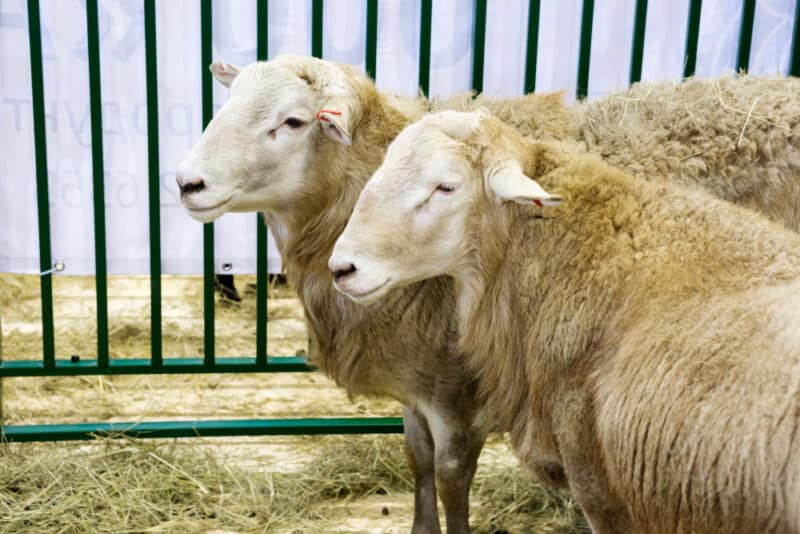
When it comes time to breed your dairy sheep, you will need to remember that those that are purebred (and of the breeds listed above) will be superior to other breeds than non-dairy ones. That said, these “dairy breeds” often cost much more, particularly if they are from certified lines.
You can cross-breed your dairy sheep with other, less-expensive sheep to get a similar result, or you can purchase a flock solely composed of dairy animals from the start.
Either way, know that most sheep are seasonal breeders. They will begin mating once the days get shorter in the fall, typically somewhere between August and December. This varies depending on where you live and what kind of sheep you are raising.
The gestation period for most breeds can vary a bit, too, although most will take around 147 days (5 months) to gestate. Depending on when you breed your sheep, they can lamb anytime in the winter or spring.
Lambs reach maturity in 7-10 months, with ewes giving birth to 1-3 lambs at a time. Most dairy breeds produce singletons or twins.
Housing for Dairy Sheep
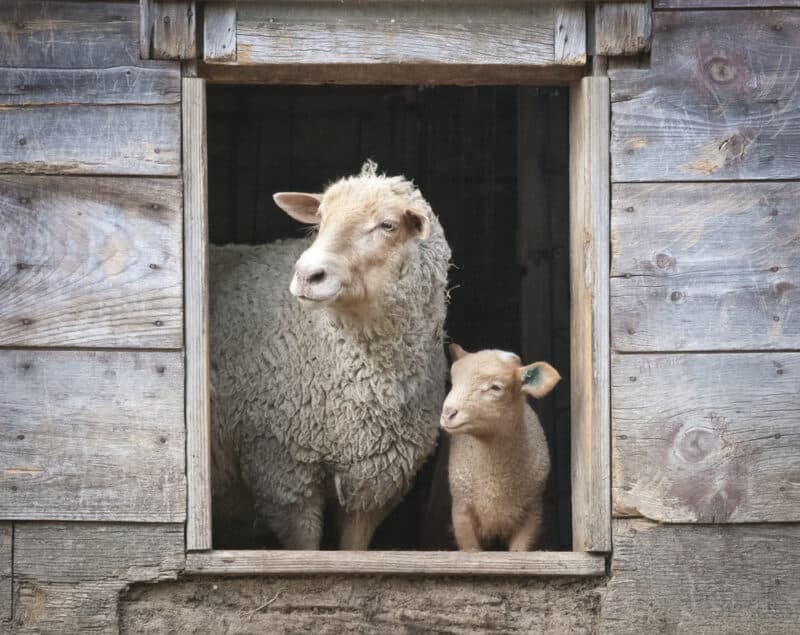
Mostly, dairy sheep can be kept in any other kind of housing that you might want to use for your sheep.
The key thing to keep in mind here is that you need a spot for them to lamb. While a shepherd raising meat lambs could reasonably expect to not keep any sheep over the winter who will lamb, that’s not the case with dairy breeds. The goal is for them to lamb so they can produce milk!
Therefore, you must make sure your sheep have some sort of shelter to lamb in during the winter months. It should be free from drafts yet well ventilated. This will prevent young lambs from get a chill when they are first born.
Ideally, provide a minimum of 20-square-feet per ewe. This will give her and her lambs enough room to move around. The more room, however, the better.
If you live in a warm environment, you may get away with no winter shelter for lambing. Your ewes can lamb on pasture. However, you may still have to set up a barn space for milking (a milking parlor) and erect shade for your sheep during the hotter months.
Lamb Management for Dairy Production
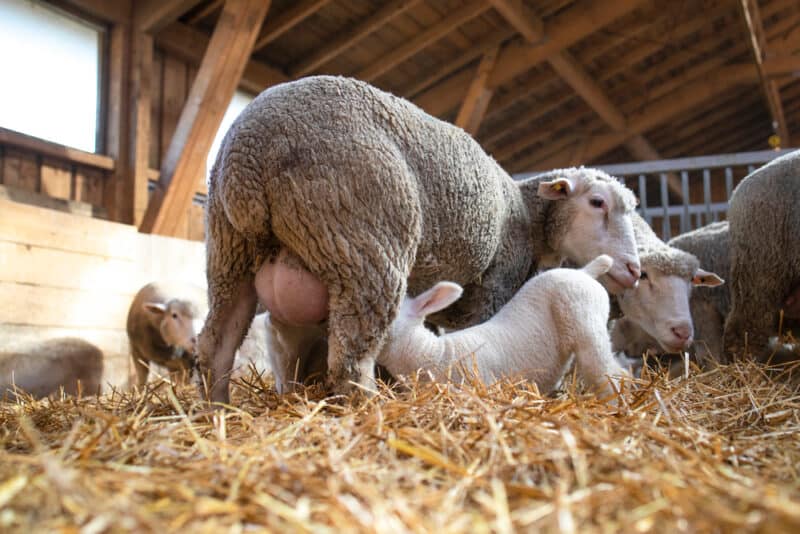
You already know that lambing is necessary if you want to raise sheep for dairy. However, you might be perplexed when you’re trying to figure out how you manage lambs that need to eat from their mothers with a productive dairy enterprise (I know I was!). You have several options.
One option is to remove the lambs from their mothers within 36 hours of lambing (but no sooner than 24 hours, so they can still get colostrum). You will milk the ewes twice a day and feed the lambs milk replacer.
You’ll then be able to keep all the milk for yourself or sell it. You can bottle feed the lambs, as mentioned, or sell them off as bottle lambs.
Another option is a 30-day system. In this technique, you allow the ewe to nurse her lambs for 30 days. Then you wean the lambs completely. You won’t get quite as much milk, but it requires far less labor.
The growth of your lambs might also slow. If that’s something that matters to you for your goals, you may have to avoid this technique.
You can also attempt a mixed approach, in which you allow the lambs to nurse from their mother for a full 30 days. After 30 days, separate the lambs in the evening so that the ewes can be milked first thing in the morning. They can then nurse from their mother as often as they’d like during the day.
What to Feed Dairy Sheep
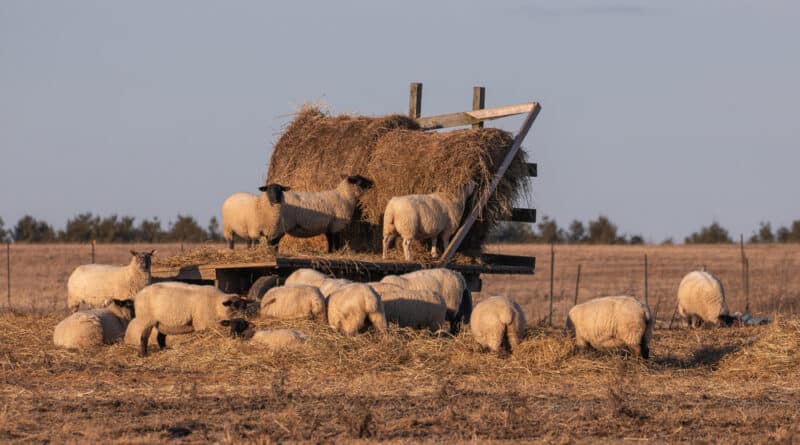
As with all lactating animals, feed is a top priority. Without proper nutrition, milk production will decrease and a variety of health problems can arise, too. Ewes that are being raised as dairy animals should consume up to 4% of their body weight in dry matter each day.
Feed your sheep a combination of hay, pasture, silage, and concentrates like oats, corn, and barley. Remember that a ewe will never eat more than when she is lactating. You can find more information on what to feed sheep here.
Don’t forget to supplement with minerals, too. Sheep are sensitive to copper (it can be fatally toxic) so make sure you get one formulated for sheep instead of goats.
How to Milk Sheep
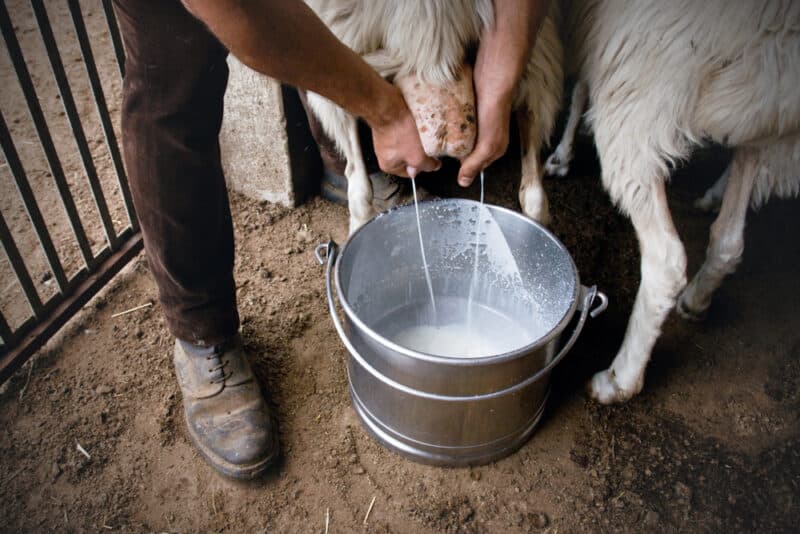
Dairy sheep produce milk from their lambing cycle until well into the fall, when the shortened daylight hours trigger mating season and reduce milk production. Most ewes dry off in September or October. The earlier your ewes lamb in the calendar year, the longer the length of lactation since it’s not determined by the age of the lamb, necessarily, but the calendar.
Most dairy breeds lactate for around 120-140 days. If you are planning on raising sheep primarily for dairy, plan on only being able to milk about 80% of your flock. There will always be something going on that can wreak havoc with breeding and milking, like lambing problems or mastitis.
You can milk your sheep by hand, or you can use equipment.
Either way, consider securing your ewes in stanchions so they stand still while they are being milked. The easiest way to do so is by using a commercially designed stanchion that does not include individual headgates.
You will need equipment like a vacuum pump and line, a milking bucket, and a claw. The more claws and buckets you have, the faster you can milk your sheep and transport it from the parlor.
To milk by hand, place your hands on the ewe’s udder and allow the teats to protrude from the bottom of your grip. Apply pressure by tightening a fist, from top to bottom, to force the milk down and out of the teat. It’s as simple as that!
Other Milking Considerations
If you’re just milking sheep for yourself – and not selling the milk – it doesn’t have to be a costly endeavor. Keep in mind, though, that if you intend to sell any milk, you’re going to need to invest in formal milking facilities, equipment, and a license.
To sell grade A milk, your water must be certified as safe drinking water. Other restrictions apply, too, in terms of refrigeration and transportation, so make sure you do your research on what regulations apply where you live.
Health Considerations for Dairy Sheep

Dairy sheep have similar health considerations as other sheep raised for wool or meat. Be sure to vaccinate lambs with the CDT vaccine at birth – this is the only universally recommended vaccine for all sheep.
You may need to give a booster to ewes, too, to provide passive immunity to their newborn lambs.
Sheep of all kinds are especially prone to internal parasites. Follow a thorough deworming regimen, but be careful as some have withdrawal periods that affect the milk. This is true of most medications you may need to use with your sheep, too.
As with any lactating animal, keep an eye out for mastitis and other issues related to nursing. Being aware of early signs and symptoms and simple home remedies you can use can be a true lifesaver.
Should I Raise Dairy Sheep?
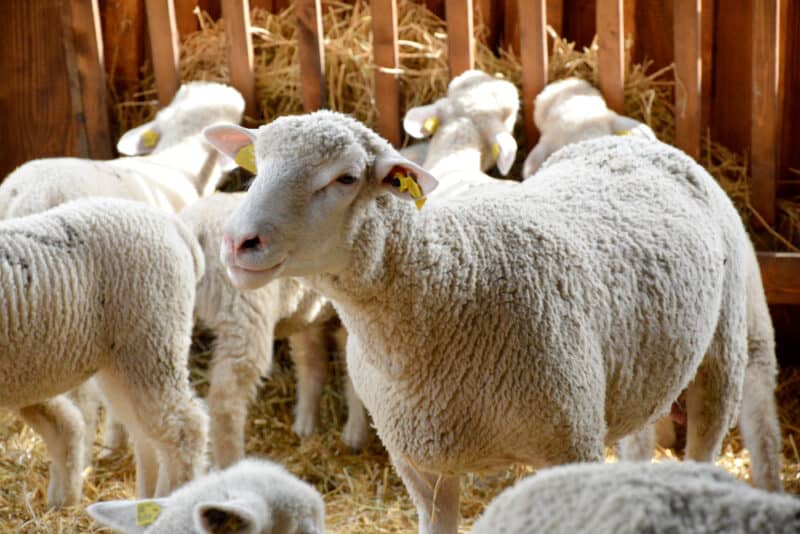
Before deciding whether raising dairy sheep is right for you, consider what you can handle on your farm, according to both your finance, schedule, and your land use. Dairy sheep, when raised correctly, requires a fair amount of space and always require a lot of time every day.
Therefore, you must make sure this is a realistic endeavor for your personal goals.
However, if you decide to raise dairy sheep, know that it’s a smart choice. With so few farmers raising sheep in general – and especially for their milk – you’re likely to be the only person in your area with fresh sheep’s milk for sale!
Plus – let’s not forget that it’s absolutely delicious.
